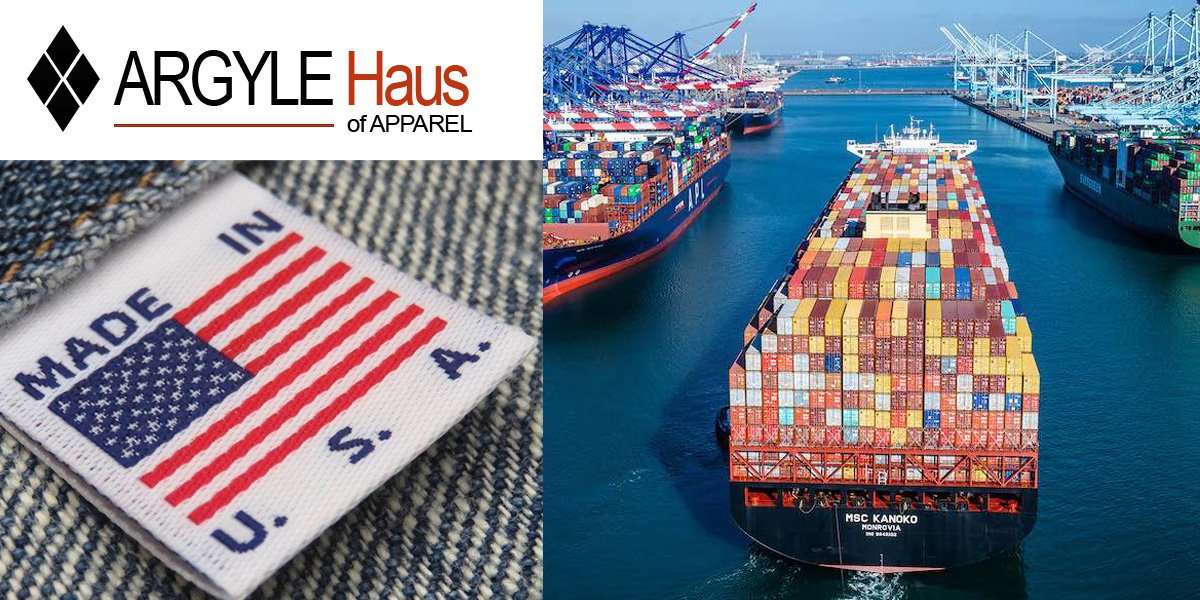Until the early 1990s, the vast majority of US clothing manufacturing sold in the United States was made in the United States. States such as North and South Carolina, New York, California, Washington, and Georgia were among the leading producers of American made clothing line- with iconic brands including Levi’s, Cherokee, Hanes, The Gap, Nike, among many others.
US Clothing Manufacturing Regulatory Policies
However, a number of regulatory policies and a shift towards trade with Asian countries opened the doors to the option of mass producing garments overseas, primarily in China. This option was truly only available to the privileged few brands that could afford the risk of having their supply chain half a world away. But by the early 2000s the shift towards China for custom apparel production was common place and the greatest benefit to brands, and to consumers, was the lower prices of goods sold in to the USA.
Today, however, there are many social and geo-political issues that are making brands, both big and small, reconsider their supply chains. As a result, the reoccurring question among fashion industry executives and entrepreneurs is: Are brands better off today US clothing manufacturing or Overseas? Although there are several pros and cons to both options, we have focused on the top 3 reasons to why US clothing manufacturing is a better option:

1. Fair Wages and Human Rights
US clothing manufacturing overseas is less expensive due primarily to the low cost of labor. As shown in the 2015 documentary True Cost, which highlights the realities of US clothing manufacturing production overseas, workers are paid far less than what would be needed to maintain even a minimum living standard.
There are little to no regulations on working hours, time off requirements, health care options, child care options, or safety requirements. Many factories overseas violate basic human rights to get prices to the lowest point possible.
By contrast, The United States has one of the most stringent set of regulations on wages and human rights. In particular, California and New York have the toughest laws protecting workers in the garment manufacturing industry.
In California, anyone engaged in the business of US clothing manufacturing (either as a supplier, contractor, manufacturer, and/or brand) must be licensed by the CA Department of Labor Safety Enforcement (DLSE).
The DLSE has a number of regulations centered on workers’ rights and safety that all garment factories in California must comply with or they will risk losing their licenses. Operating a clothing manufacturing company in California without a valid license from the DLSE is considered a misdemeanor and the department can and will impose fines to both the US clothing manufacturing (brand) and the contractor (factory) for operating without proper licensing clothing brands manufacturers for startups in USA.
2. Quick Response
The fashion and US clothing manufacturing in industries have historically been among the most competitive top clothing manufacturing companies in the world. With styles and trends changing at such rapid paces, companies do not have the luxury of time to wait for their good to be made and shipped from overseas. Fashion trends can now change at the speed of social media and this can mean huge financial losses if a company misses the trends.
Generally, if a brand is producing 25,000 to 50,000 pieces of any garment overseas, they can expect production to take between 2 to 4 months with a mid-sized factory. Since that volume of goods will not fill up a standard sized shipping container, that company will need to wait for the shipping container to be filled by other companies and products before it can ship to the USA. This may add an addition 2 to 4 weeks to the lead times (at least) . Transportation from Asia can take between 15 and 30 days until it reaches a US port (usually the Ports of Los Angeles or San Pedro in Southern California). From this point the goods will need to go through customs which can add an additional 2 to 4 weeks to delivery. Once the products clear customs, they are finally transported to your location. As a result, it may take upwards of 7 months to receive goods from overseas.
Top clothing Manufacturers In USA
By contrast, the same volume of goods made anywhere in the US clothing manufacturing can take between 10 to 16 weeks and can be sent anywhere in the USA via FEDEX, UPS, or Freight within 8 business days. Speed to market provides a significant competitive advantage that overseas produced brands cannot contend with. Furthermore, a lot can change in those 7 months producing overseas to where those products may no longer be relevant to consumers once they do arrive.
3. Tariffs and Global Uncertainty
The drive towards overseas manufacturing over the past 25 years has created trade imbalances that are now being aggressively addressed by the Federal government. There are no easy solutions to the trade imbalances and the impending trade complication with China will leave companies that manufacture in China vulnerable to excessive tariffs. These are fees that will ultimately be passed on to consumers.
In June of 2018 the Federal government proposed a 10% tariff on $200 billion worth of Chinese imports. This includes such products as consumer goods, apparel, handbags, and makeup. China has responded by applying new tariffs on American made goods sold into China.
The term most commonly used to describe this economic conflict between two nations is known as a Trade War. In the event of a trade war, as is the case with any war, those caught in the middle have the most at stake and the most to lose. In this case it is the brands that Manufacture in China and the US clothing manufacturing consumers they serve.

several years China has come a long way with regards to enacting regulations centered on working conditions and human rights for workers. However, a trade war with China will force many companies to move their production to other countries that have yet to embrace such regulations.
The primary reason that companies chose to manufacture apparel overseas is price. When companies negotiate price with overseas factories they are largely concerned about the “per piece” price of the goods being manufactured. Whereas a simple tee-shirt may cost $8 to $10 per piece if made in California, that same tee-shirt may cost $2 to $4 if made overseas. However, this is not the final cost.
Brands must also consider lead times, shipping costs, US Customs fees, as well as taxes and tariffs which add to the overall costs. In this manner, the final cost may not be too far off from US clothing manufacturing in the USA. Finally, if human rights, working conditions, and speed to market are of any concern to a brand, they should consider these as intangible costs that should also play a role in the decision-making process.






